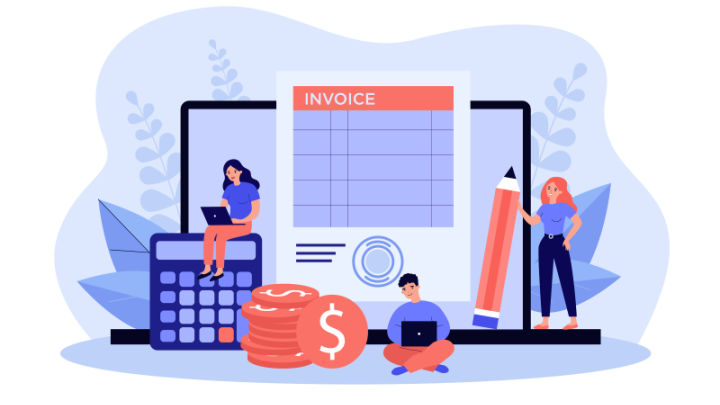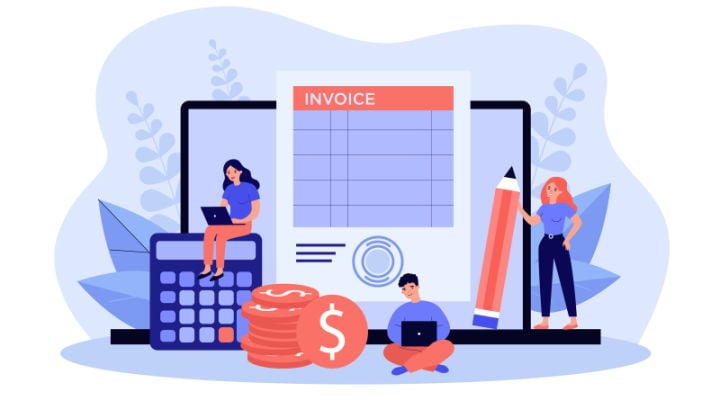4 E-commerce Trends in 2026
What will the biggest e-commerce trends be in 2026? Artificial Intelligence will clearly play a big role. We explore those trends with 4 predictions.

Rapid growth in online orders in recent months has led to the implementation of changes stipulated in the reform of the EU VAT system. Are you running an online shop that is selling products cross-border? Then read on to find out what will change from July this year and how your business is preparing.
According to data from the European Commission, EU member states continue to lose nearly €150 billion in revenue from value added tax (VAT) each year.
Of this figure, it is estimated that around €50 billion will end up in the hands of criminals, scammers and probably even terrorists.
For this reason along with the fact that online shopping has seen such rapid growth since the outbreak of the coronavirus, the European Commission has decided to accelerate the implementation of the changes to the reform of the EU VAT system.
The aim of this reform is to avoid the loss of tax revenue and significantly reduce cross-border VAT fraud so that European and non-European companies compete on equal terms. Ultimately, this should facilitate cross-border trade within the EU.
When will these changes be implemented?
The changes to the VAT reform will be applied on July 1, 2021 in all EU Member States and will affect all e‑commerce businesses.
The VAT Directive includes the following changes:
To better understand the significance of these changes, it is necessary to first examine the current situation.
Currently, if the annual sales of an online shop to foreign customers exceed a certain threshold, the business must register with the tax authority of the respective country to which it supplies the products and levy the tax there.
However, if the online shop doesn’t exceed this threshold, only the VAT of the country of origin (i.e. the VAT of the country in which the online shop is registered) will be applied in billing to foreign customers.
Example:
Imagine you have an online shop with a Spanish VAT number and you sell your products to Swedish consumers and the respective annual turnover exceeds €100,000 (let's just assume this is the threshold in Sweden). In this case, you are obliged to register for tax purposes in Sweden, invoice at the VAT rate applicable in Sweden and pay VAT there.
However, if your turnover is less than €100,000, you don’t need to register for tax purposes in Sweden and you can continue to invoice at the VAT rate of your country (21% in Spain).
💡Note: VAT conditions are set independently in each EU member state. Each country sets a different threshold.
Likewise, when it comes to imports, goods less than €22 are exempt from VAT payments, something that could lead to fraud in the declaration of the products purchased.
The new changes established by the European Commission aim to improve e‑commerce tax practices.
The correct implementation could be a challenge for some online shops, so we recommend hiring the services of a tax advisor to facilitate and simplify the process.
The main changes included in the reform of the VAT system and relevant for ecommerce are the following:
As of July 1, 2021, online shops with an annual turnover of more than €10,000 will be required to invoice customers from other EU member states at the destination country VAT rate.
With this new regulation, national thresholds are abolished so that there is only a single common threshold for all member states.
The good news is that thanks to the so called “one-stop-shop system” (a EU web platform where VAT is submitted and paid electronically) there will be no need to register for tax purposes in another state.
This will make it easier for shop owners to comply with the legislation.
The one-stop-shop system will be remitting the collected taxes to the respective member state.
For this, companies will have to sign up at the platform. Also, you will need to know about the different VAT rates applicable to your products offered in other EU member states. Those must be declared in the invoices.
Recommended reading:
How to Differentiate Your Shop from Competitors Selling the Same Products

Shutterstock/BRO.vector
With the new regulations, any import made from a country that isn’t a member of the European Union (a third country), will be subject to the VAT of the Member State of destination regardless of the value of the import.
Example:
Imagine that a German online shop wants to make an import with a value of less than €22 from the United States to Germany. In this case, the online shop will have to bear the VAT costs of Germany as a EU member state as this is the country of destination.
As far as customs taxes are concerned, if the turnover is less than €150, the online shop of the EU member state will be exempt from customs taxes.
However, if the turnover exceeds €150, the online shop of the member state (country of destination) will have to present a full customs declaration and bear the corresponding costs.
Marketplaces such as Amazon or eBay may be considered sellers for VAT purposes. This relates to two specific cases:
Example:
If an online shop in the US operates on the Dutch Amazon marketplace (Amazon.nl), but ships out items from a warehouse in the Netherlands, according to the new law, Amazon would then be considered a "seller" for VAT purposes and therefore must assume the VAT management of the shop.
In this section, we'll explore what these changes mean for shop owners.
The relevant EU directives and the corresponding national laws (e.g. Sec 1 (1) of Germany’s Price Indication Regulation - PAngV) require that the total price must be indicated to consumers. The total price is the price to be paid by the consumer including VAT and other price components.
The fact that the total price includes VAT must be provided separately (e.g. by stating "incl. VAT"). The specific amount of VAT, however, does not have to be indicated. Accordingly, the gross price is required when dealing with consumers; it is not mandatory to indicate the specific VAT rate.
The uniform threshold of €10,000 would naturally have an impact on the online shop - the different VAT rates within the EU will make price calculation more difficult. The following potential solutions can be considered if the threshold(s) are exceeded:
First, the gross prices you charge in your home country could be increased and brought into line with the VAT rates of other EU countries. As mentioned above, it is not necessary to indicate the specific amount of VAT in the total price (just indicate that the price includes VAT), so the legal requirements would still be met.
In this way, profit losses due to higher VAT rates in other EU member states can be avoided. However, an increase in prices always comes with a risk and it could effect your conversion rates.
The second option is to maintain the gross prices you charge in your home market. Here, too, the legal requirements on price indication would be fulfilled. However, depending on the member state and the tax rate applicable there, the calculation in this case may be based on lower net prices, so the profit margin would decrease as well, but conversion rates would most likely remain unaffected.
The third option would be to establish country-specific shops. With this option, customers can choose which country-shop they would like to visit upon entering the website depending on which country the delivery should be made.
By selecting the country, customers would be redirected to the respective country shops with the gross prices adjusted for them. Country-specific shops offer the advantage that different VAT rates can be taken into account and the price calculation is simplified. However, this solution is more complex to implement and maintain.
Establishing a single European VAT system that is simplified and reduces tax fraud has long been one of the main objectives of the European Commission. The need to implement it has increased in recent months after the rapid increase in online-sales.
As of July of this year, the new regulations will come into force with the aim to centralise procedures and optimise taxation processes through concrete regulations for all EU member states.
The new VAT system will help European companies to benefit from both single markets and compete in global markets at the same time.
This article was originally published on our Spanish blog: IVA en eCommerce: ¿Qué cambiará a partir de julio?
26/05/21What will the biggest e-commerce trends be in 2026? Artificial Intelligence will clearly play a big role. We explore those trends with 4 predictions.
SEO is an important tool for e-commerce businesses to bring in new customers. Here are the best tips for your online shop to rank higher in Google.